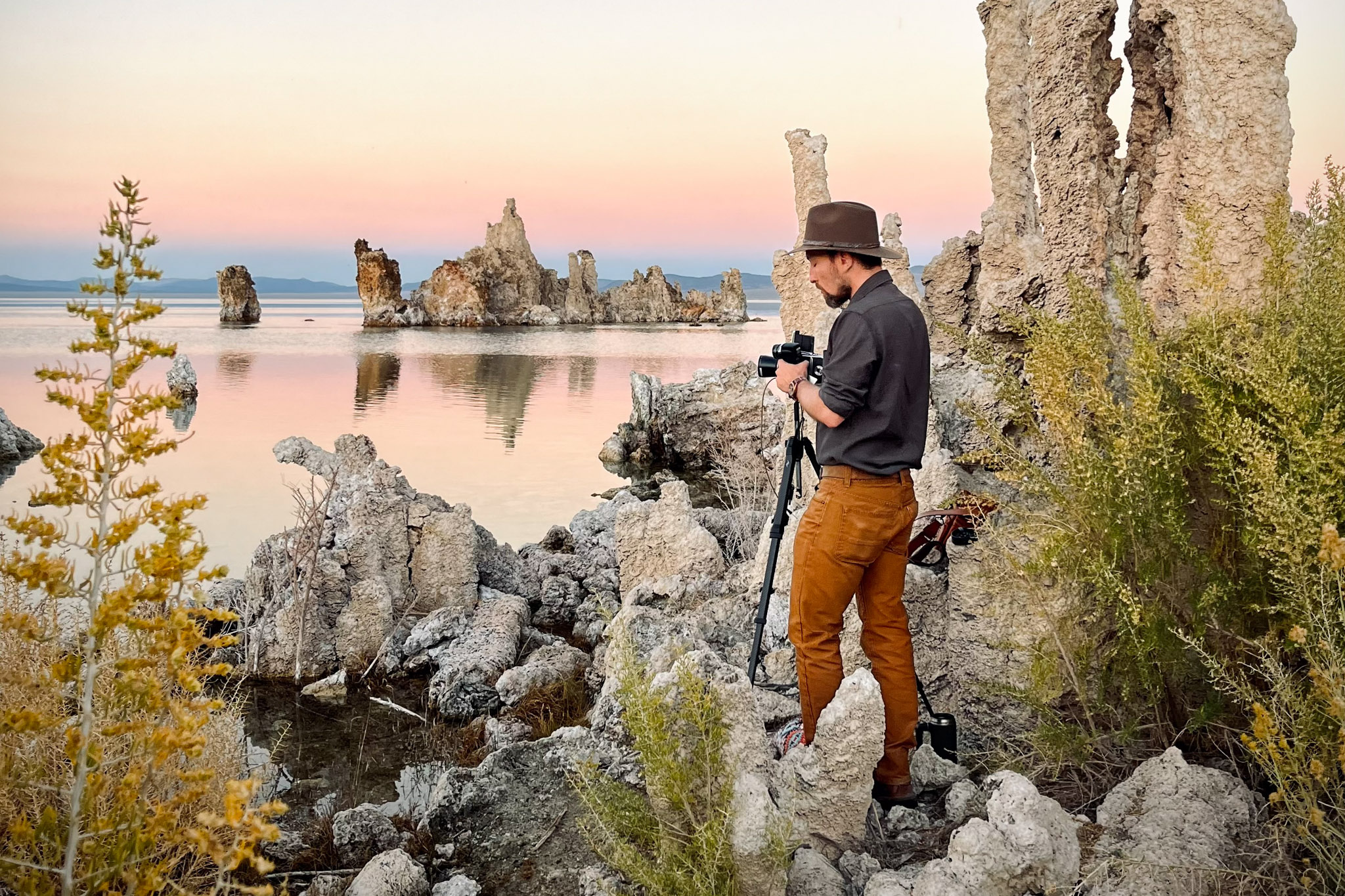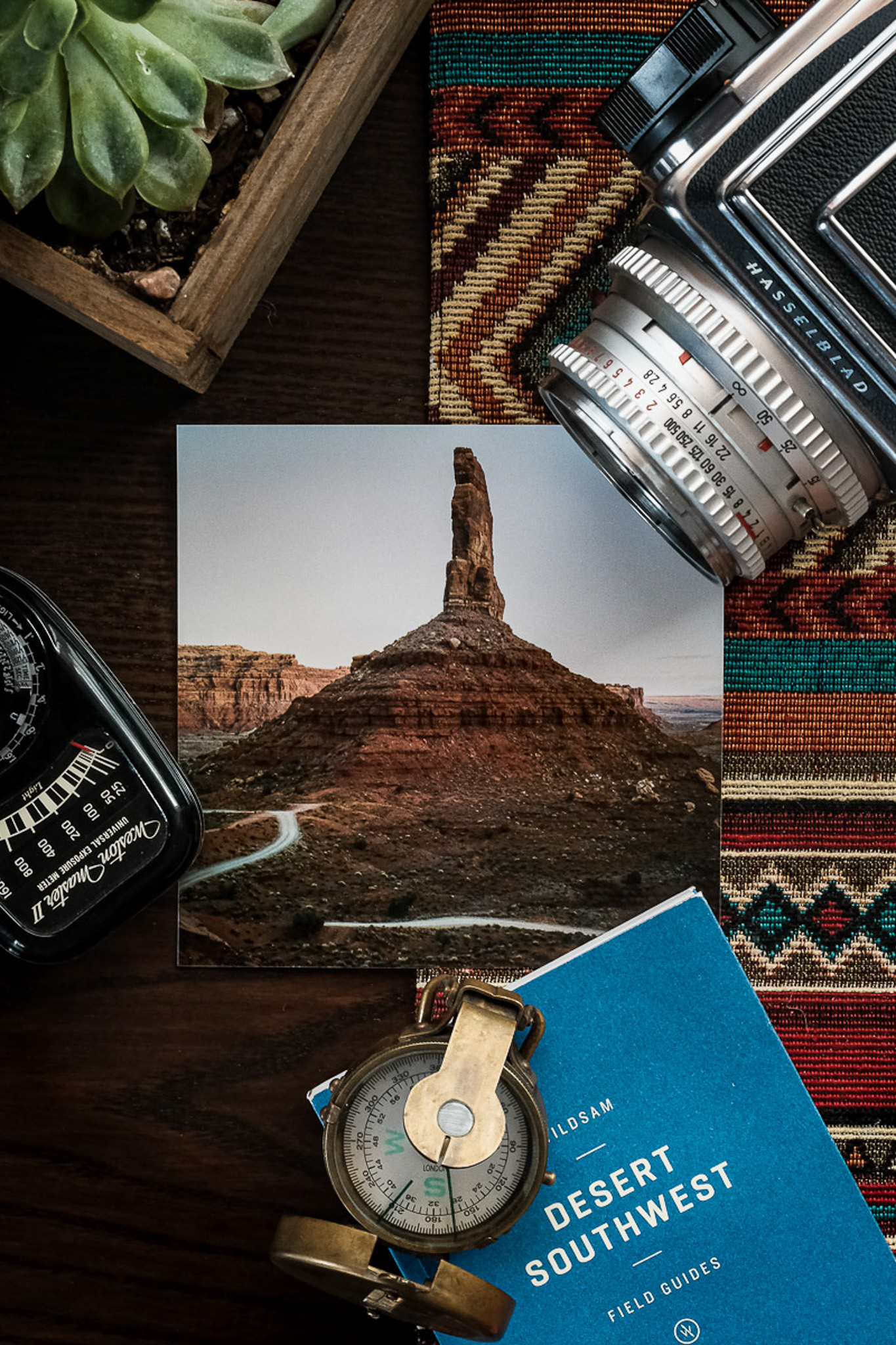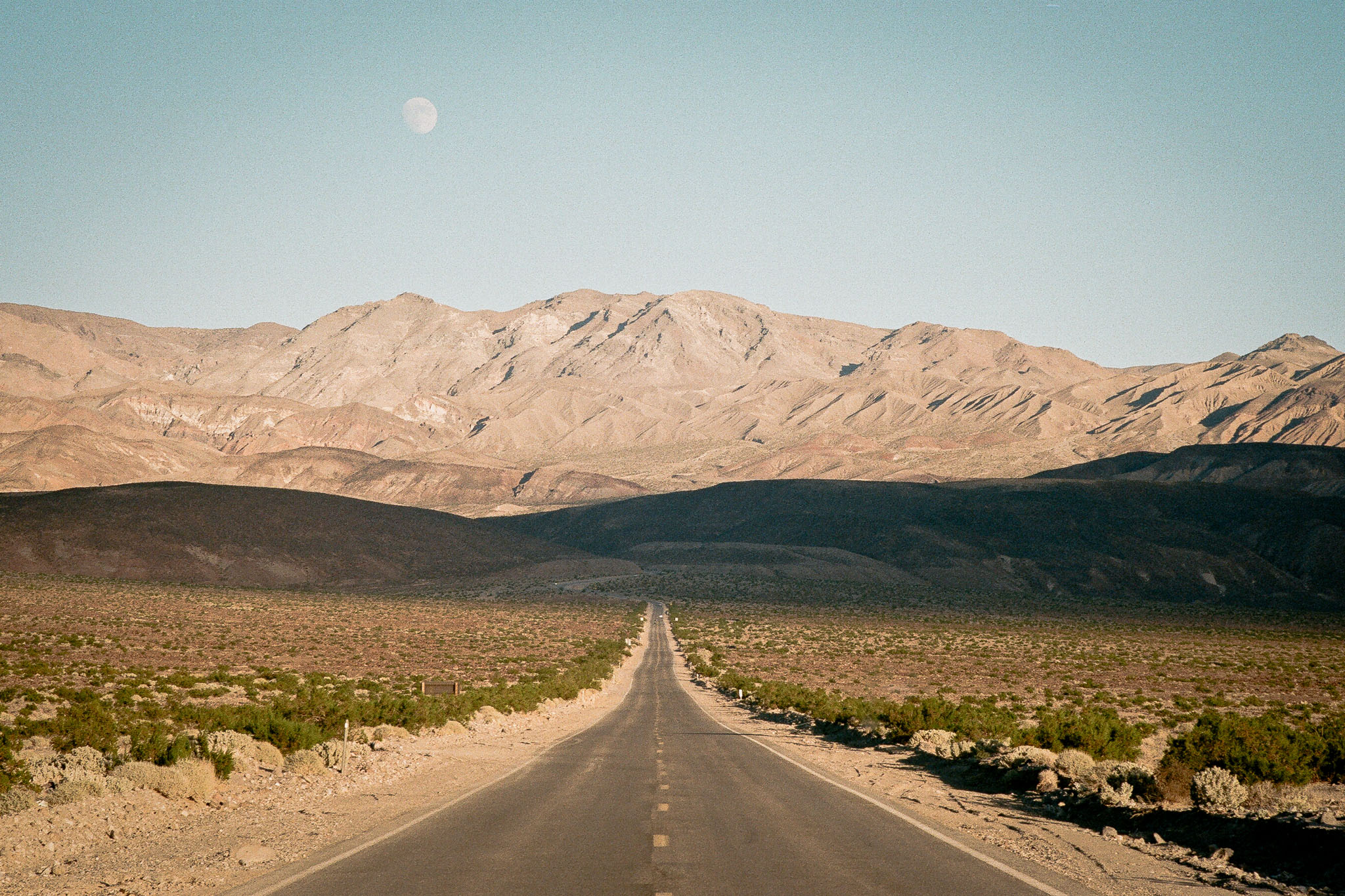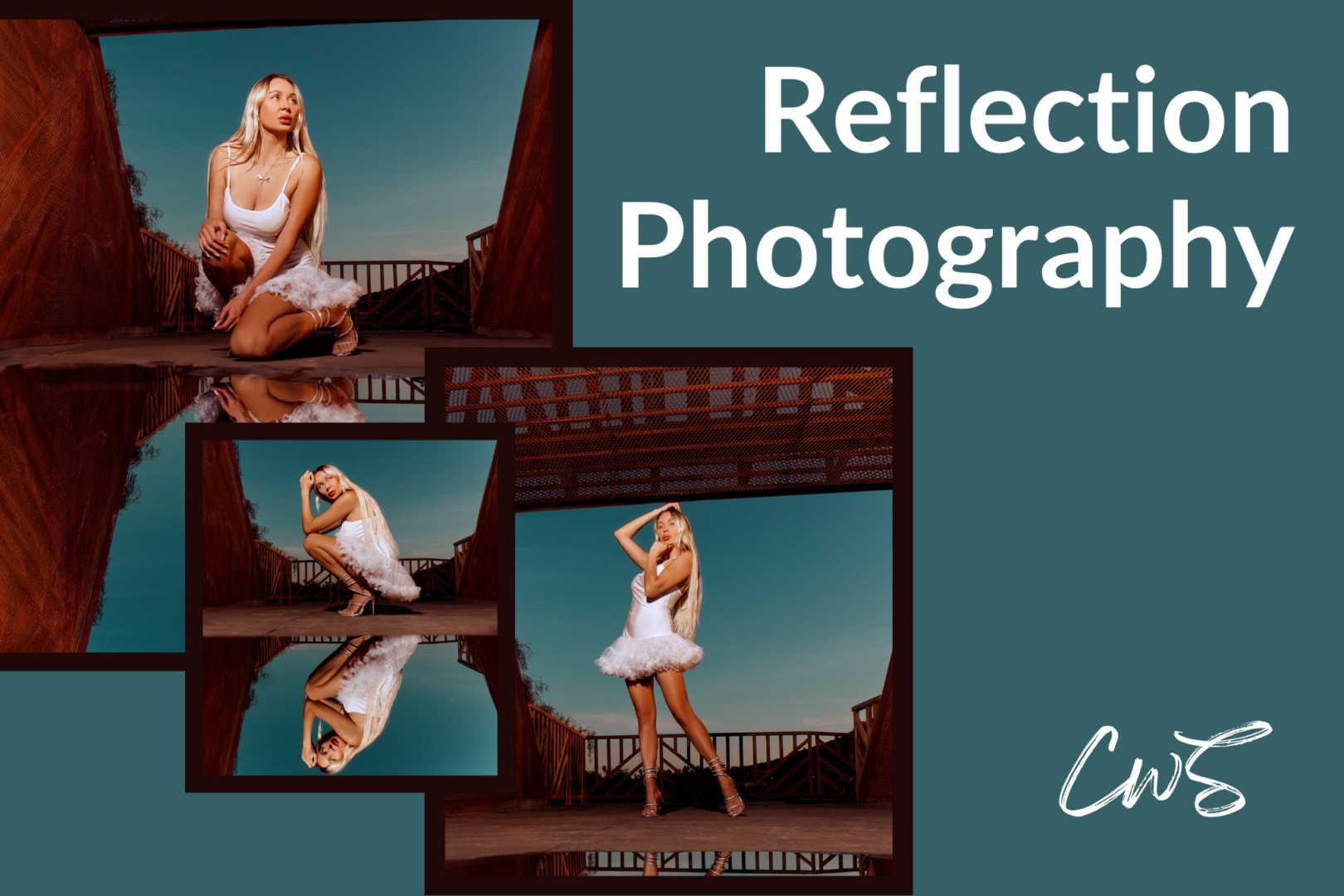Specializing in landscapes and documentary travel, Justin Guerra is a film photographer influenced by the rich history of the American West. As a featured photographer for Gallery Canyons, his work possesses a distinctive flair, unfolding like chapters in a fascinating story of nostalgic echoes from days gone by.

Now let’s dig into the interview I had the pleasure of conducting with Justin, exploring the nuances of classic photography. I asked him questions about what draws him to film over digital and his secrets infusing his style and personality into every shot.
Justin, what initially drew you to film photography over digital? and was there a particular experience that solidified your preference?
I’ve always had an affinity for history, antiques, and old things. I had been shooting digital for years when I stumbled across an old Minolta Autocord TLR in a local antique shop. The style of the twin-lens reflex camera was so eye-catching and foreign. Picking it up and looking down through the waist-level viewfinder, seeing the reversed image through the ground glass, turning the little crank to advance the film and fire the shutter it was all such an intriguing experience coming from the process of digital. I bought it kind of just as a shelf piece at first, but after having it for a while, looking at it all the time wasn’t enough; I wanted to actually use it. I bought a couple of rolls of cheap black and white film and took it out during a camping trip. I did my best to calculate exposure, to manually focus, and get used to composing in reverse, but I wasn’t really expecting much. I sat on those developed rolls for months and kind of forgot about them. Finally, while getting ready for a move, I decided to send them out to a lab. When I got back the results, I was floored. The images weren’t anything stellar, but reliving those moments so many months later rather than instantly with a digital camera was really impactful. Holding the negatives in my hand afterward, and the tactile experience of using the camera, was such an enjoyable part of the photographic process that I had never really experienced before. I was hooked after that. I still enjoy shooting with digital cameras when the situation calls for it, but for a lot of personal work, the tangible quality and the way different film stocks render color and tones to almost look like paintings have driven a lot of my creativity over the past several years.

How do you approach lighting in film photography, considering its unique characteristics compared to digital mediums?
Coming from a digital workflow, breaking out of some of those norms regarding lighting can be a challenge. With digital, exposing for the highlights is usually the rule of thumb, but with film, it is the opposite. Shadows quickly fall off, and underexposure results in muddy darker tones, weird color casts, and lots of grain. With film, the stock you pop into your camera is effectively your sensor. Each film stock has its color science and degrees of dynamic range. It also has its set ISO, with lower-speed films having finer, sharper grain than higher low-light ISO films. Color negative film is usually the most forgiving and has a wide dynamic range. I usually err on the side of overexposure, so I may rate the film slightly slower than the box speed and expose for my shadows. Kodak Ektar 100 is my favorite color negative film. It is sharp with punchy colors and has a super wide dynamic range. This is my go-to for landscape photography. Slide film is the least forgiving and has a very narrow dynamic range. It can be challenging to shoot with in dynamic lighting and may take some practice to get the hang of. For me, using the Zone System developed by Ansel Adams has been really helpful to understand exposure and lighting in these situations. I have a little printout of a Zone Scale on my spot meter, which helps me place highlights and shadows to ensure they are within the range of the film’s capabilities. Sometimes graduated ND filters are necessary to even things out. It can be a pain to learn and shoot, but the trade-off in a well-exposed roll of slide film is super fine grain, vibrant colors, and holding and seeing that positive image firsthand on a light table.

What film cameras do you primarily use, and what draws you to those particular models?
I’ve been lucky to have bought, sold, and traded a variety of analog cameras over the years, ranging from little compact point-and-shoots to large format 4×5 field cameras. I try not to hoard gear and will only keep things around that I shoot with. Half the fun of shooting film is experimenting with different formats and cameras, all with their own quirks and pros and cons. Today, I primarily shoot with three analog cameras, each with its own use case. The Nikon F3, a 35mm SLR built like a tank, is not only rugged but also boasts more modern features that are basic in the digital space but fancier in the film world, such as a self-timer, aperture priority mode, a double exposure lever, and an exposure lock button. I use this primarily for hiking and trekking in the backcountry, mostly with an assortment of three Nikon prime lenses (24mm, 50mm, and 105mm). Next is a Leica M6, a 35mm rangefinder camera. As film has seen a resurgence, this camera has exploded in popularity, with Leica even reintroducing and making it brand new again. My copy is an older classic model from 1989, and I was lucky to snag it before pricing got out of hand. It is as minimal as cameras come in terms of features but has an internal light meter, unlike many previous Leica models. Attaching Leica lenses to it was my primary driver for picking it up. Leica has been developing their cameras with the M mount from the 1950s to the present day, and there is an amazing lineup of lenses to play around with. I have a 28mm, 35mm, 50mm, and 90mm, but primarily shoot with the 35. The hype around this camera is deserved, though. It is really enjoyable to use, and the method of rangefinder focusing and framing really resonates with me. It is my preferred everyday carry camera, compact and perfect for documenting road trips, travel, and life in general. It truly is an heirloom camera, and I intend to hold onto it until I’m dead. Lastly, there’s my Hasselblad 500cm. This is an SLR-style medium format camera that shoots 120 film in either 6×6 or 6×4.5 formats. These larger negatives result in some insane detail and resolution. The camera is modular, and there are tons of accessories out there for it. It has detachable film backs, so picking up a couple means you don’t have to commit to a whole roll at once. I can keep color film in one and black and white in another, for example. The camera is all mechanical and primarily comes with a waist-level viewfinder. Looking down and composing through the ground glass is one of my favorite parts of shooting with this camera. It has no light meter, so I calculate exposure with an external meter. I use an old Pentax Spotmeter for a lot of my work. I shoot with a 50mm, 80mm, 180mm (equivalent to around 28mm, 45mm, 100mm on full-frame 35mm). All together, this is a heavy kit but is my main camera when I am out shooting landscapes, where I can be methodical, slow down, be careful with composition, and plop it on a tripod.

What inspires your creative process when capturing photographs on film?
A really fun aspect of analog photography is how inherent and sometimes limiting parts of the process can inspire a lot of creativity. Committing to a roll of black and white makes you see light, contrast, and texture in a different way. Different color film stocks render color tones in different ways, so learning how those films behave will change your photographic eye and the way you see colors. Different cameras inspire creativity with the formats they shoot. My Hasselblad, for instance, shoots 6×6 negatives, so it has a 1:1 aspect ratio. Learning to see and compose images exclusively in a square was a challenge at first but is now one of my preferred aspect ratios. The development process unlocks a whole world of creative potential as well. I develop my black and white film at home, pushing film in development, agitating more or less to add grain and texture, or using different developers to boost contrast and deepen blacks are all creative, hands-on parts of the process I can’t get shooting digitally.

How do you infuse your personality into your photography? Are there signature elements that define your work?
I have always been deeply drawn to the outdoors, nature, and exploring the West. I strive to capture the feeling of being engrossed in a landscape, whether through intimate close-ups in nature or grand, sprawling vistas. I am also a sucker for the good old-fashioned American road trip. I love a classic diner and a motel with character. I try to capture the unique emotion in these places—the dreaminess of landscapes or the nostalgia in throwback Americana. Working primarily with film adds an extra layer to some of the feelings I try to elicit with my imagery.

What advice would you offer to aspiring film photographers looking to explore this medium?
Learning to shoot film for the first time can be an overwhelming and frustrating experience. Outside of the technical struggles, you’re often dealing with gear that is 50+ years old and prone to failing. Don’t go all in on the most hyped gear and the most popular film stocks at first. Shooting film has become colossally expensive, so get a solid working beginner SLR and pick up some cheaper black and white and budget color film stocks first. Learn exposure, manual focus, and how to load and operate your camera. It takes practice, and like any hobby, mistakes happen, but you’ll learn and enjoy the process. Once you’re comfortable, work up to trying out different cameras, larger formats, and fancy film stocks. The medium has so many possibilities and avenues to explore. It is easier than ever these days to get burnt out with the frustrations and expense, but giving the beginner phase the space and time it deserves goes a long way in appreciating analog and getting the most enjoyment out of the process over time.

Wrapping up the interview with Justin Guerra, unveiling a journey into film and classic photography, I invite you to explore his work for an immersive experience into his unique style and visual storytelling.
Additionally, don’t forget to visit a curated prints collection featuring some of the finest works by Justin, a true testament to the timeless beauty of film photography.












Leave a Reply